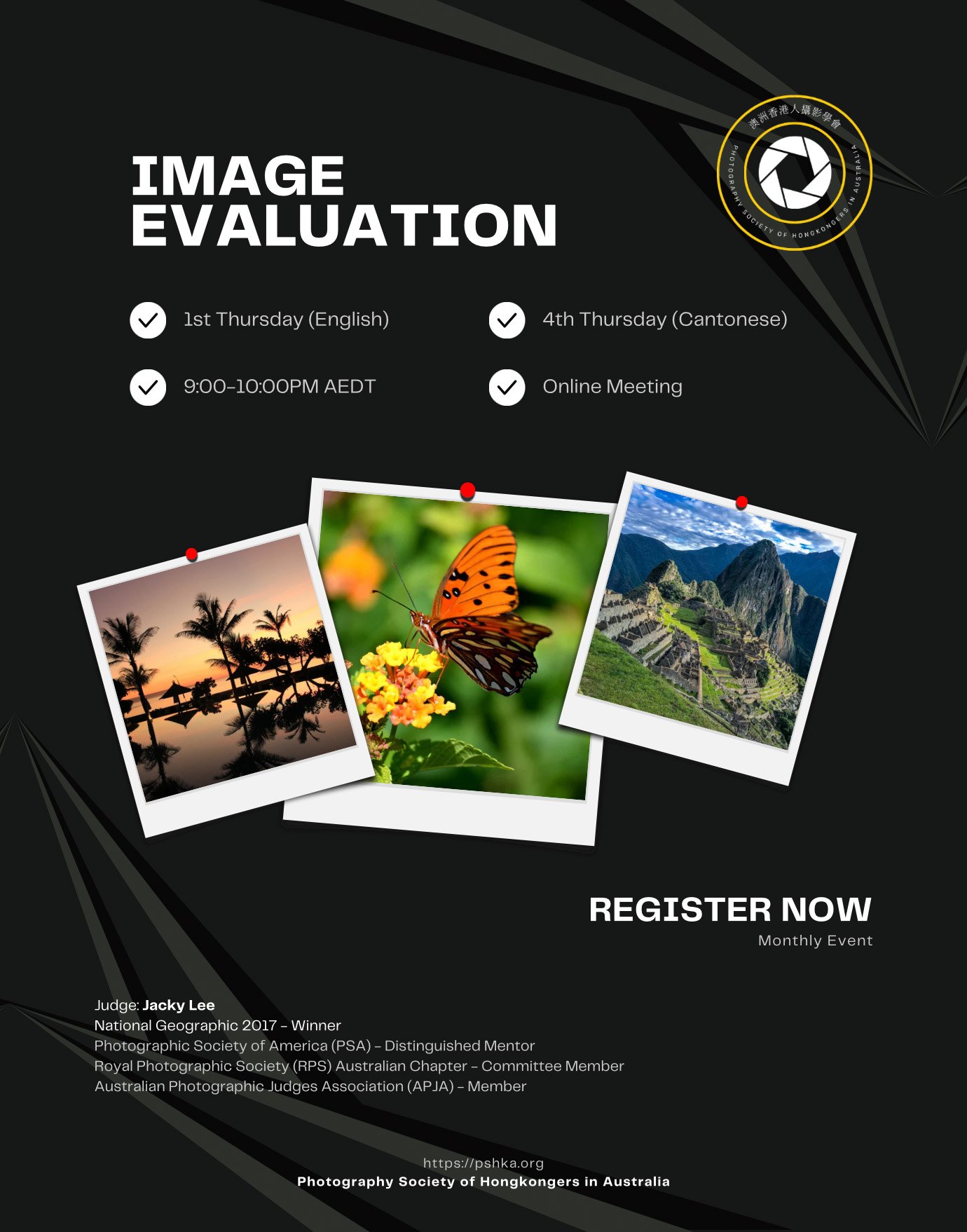A - Aperture: Mastering Depth of Field
The aperture is controlled by the blades surrounding it, regulating the amount of light that enters the lens.
(Image Credit: Alex Rhee)
Aperture is a key element in photography that controls the amount of light entering the camera. But more than just a tool for exposure, aperture plays a significant role in determining depth of field — the part of an image that appears sharp and in focus. Mastering aperture allows photographers to create visually striking images. It can be used to isolate a subject with a blurred background or capture intricate details across an entire scene.
Using a large aperture setting can create a blurred background.
(Image Credit: Artiom Vallat)
Aperture is the opening in the lens, controlled by a set of blades, which adjusts in size to let in more or less light. The aperture size is measured in f-stops, such as f/2.8, f/5.6, or f/11, where smaller f-stop values represent larger openings. This may seem counterintuitive, but think of it as a ratio: the f-number is the ratio of the focal length to the diameter of the aperture. Therefore, a smaller f-number means a larger aperture opening, allowing more light to enter the camera.
In the image above, f/8 represents the largest aperture (smallest f-number) available for this lens.
(Image Credit Pierre Bamin)
A larger opening creates a shallower depth of field by allowing only a narrow plane of focus. When the aperture is wide open, light rays from different parts of the scene enter the lens at steeper angles, which results in a smaller area being in sharp focus. The bending of these light rays makes it difficult for elements at varying distances from the camera to all be in focus simultaneously. As a result, only the subject at the specific focal distance appears sharp, while objects in front of or behind that focal plane become increasingly blurred. This shallow focus effect gives photos taken with a large aperture a distinct separation between the subject and the background, adding to the overall visual impact. It makes the subject stand out more prominently, creating a beautiful separation that draws the viewer's attention specifically to the subject while softening the surrounding elements.
Shallow focus creates a narrow plane of focus, highlighting the subject against a cluttered background.
(Image Credit: Joshua Rawson-Harris)
A lower f-stop (e.g., f/2.8) indicates a larger opening. This effect, often called "bokeh", is ideal for portraits where the goal is to draw attention to the subject by separating it from a cluttered background. The beauty of bokeh lies in how it softens the surroundings, creating a dreamy, artistic quality that enhances the overall mood of the photograph. When used effectively, it can transform an ordinary portrait into something magical, emphasizing the subject in a unique way.
'Bokeh' refers to the quality of background blur. Different lenses create unique bokeh patterns.
(Image Credit: Ruben Christen)
On the other hand, a higher f-stop (e.g., f/11 or f/16) results in a smaller opening, which reduces the amount of light entering the lens but increases the depth of field. This means that more of the scene — both near and far — is in focus, making it perfect for landscapes or architectural shots where details throughout the entire frame are important. A higher f-stop is also useful in situations where capturing texture and intricate details is crucial, such as in macro photography or when photographing complex cityscapes. By using a smaller aperture, photographers can ensure that every element in the frame is sharp, from the foreground all the way to the background, allowing viewers to appreciate the full context of the scene.
Using a higher f-stop, such as f/11, ensures sharpness throughout the frame, from foreground to background.
(Image Credit: Sylas Boesten)
Aperture not only controls the depth of field but also directly impacts the overall exposure of an image. When shooting in different lighting conditions, understanding how to adjust the aperture is key to achieving the right balance. For example, in bright daylight, using a smaller aperture (higher f-stop) can help prevent overexposure, while in low-light conditions, a larger aperture (lower f-stop) allows more light to enter, making it easier to capture a well-exposed image without needing to increase the ISO too much. This interplay between aperture, shutter speed, and ISO is known as the exposure triangle, and mastering it is fundamental to taking full control of your camera.
A larger aperture (small f-number) lets more light into the camera, potentially leading to an overexposed image if shutter speed and ISO settings remain unchanged.
(Image Credit: Christopher Burns)
Learning to control aperture gives you the power to decide what’s important in your image. Do you want the viewer’s eyes to be solely on your subject, isolated from the rest of the world with a soft, creamy background? Or do you want every element, from the flowers in the foreground to the mountains in the distance, to be captured with clarity? Understanding aperture is key to telling your visual story in a way that evokes the emotions you want to convey. By thoughtfully choosing your aperture settings, you can guide the viewer’s experience and communicate your artistic vision effectively. Whether you want to evoke intimacy by focusing on a single detail or convey the vastness of a landscape by keeping everything in focus, aperture is your tool for creating the intended emotional impact.
Some lenses are renowned for their creamy bokeh backgrounds.
(Image Credit: Zoltan Tasi)
Experimenting with different aperture settings is one of the best ways to get comfortable with your camera and explore the creative potential of depth of field. Start by setting your camera to aperture priority mode, which allows you to adjust the aperture while the camera automatically selects the appropriate shutter speed and, optionally, auto ISO depending on your preference. This mode is a great way to see firsthand how changing the aperture affects the depth of field and exposure. For example, try photographing the same subject at the same camera-to-subject distance at different f-stops — notice how the background changes from a soft blur to sharp detail as you increase the f-stop. This kind of experimentation will help you understand how different settings work in various situations, giving you the confidence to make creative choices on the fly.
Understanding depth of field is crucial for achieving image clarity.
(Image Credit: Siora Photography)
Whether you’re shooting portraits, street scenes, or sweeping landscapes, mastering aperture will allow you to bring your creative vision to life in every shot. Portrait photography benefits greatly from shallow depth of field, where the focus is on the subject, and the background melts away into a beautiful blur. This effect not only highlights the person but also removes distractions, creating an image that feels personal and intimate. In contrast, when capturing landscapes, using a smaller aperture ensures that all the elements — from the wildflowers at your feet to the distant mountains — are in sharp focus, providing a sense of depth and grandeur that draws viewers into the scene.
In street candid photography, using a smaller aperture ensures sharpness throughout the entire frame.
(Image Credit: Ali Barzegarahmadi)
A smaller aperture can also create a starburst effect, with longer rays around bright points of light, while a larger aperture will reduce or eliminate this effect. This starburst effect occurs because the smaller aperture forces light to pass through a narrower opening, which causes diffraction. Diffraction is the bending of light waves around the edges of the aperture blades, creating the distinct rays emanating from bright light sources. This is particularly useful in night photography, where streetlights, car headlights, or other point light sources can be transformed into visually striking starbursts, adding a creative and dramatic element to the scene. By intentionally using a higher f-stop (e.g., f/16 or f/22), photographers can enhance this effect, giving nighttime cityscapes or landscapes a unique, artistic quality. The starburst effect not only adds aesthetic appeal but also helps to convey a sense of sparkle and vibrancy, making nighttime scenes feel more dynamic and visually interesting.
Using a small aperture (f/16–f/22) can create a beautiful starburst effect due to the sun's diffraction in this image.
(Image credit: Pascal Debrunner)
Ultimately, aperture is about control — control over what is sharp, what is blurred, and how your viewer experiences the photograph. It is one of the most creative tools in a photographer's arsenal, allowing for a wide range of visual effects that can dramatically change the mood and impact of an image. Understanding and experimenting with aperture will not only improve your technical skills but also open up new creative possibilities, enabling you to tell more compelling visual stories. Whether you’re aiming for a striking portrait with a dreamy background or a detailed landscape where every leaf and rock is visible, mastering aperture will give you the ability to shape your images exactly as you envision them.
Traditional cameras have separate aperture controls, either in the lens or within the camera body, allowing for physical adjustments to the depth of field. In mobile photography, smartphones typically use 3D mapping and computational techniques to simulate a shallow depth-of-field effect.
(Image Credit: Jakob Owens)
Written By Jacky Lee, Founder of PSHKA.























